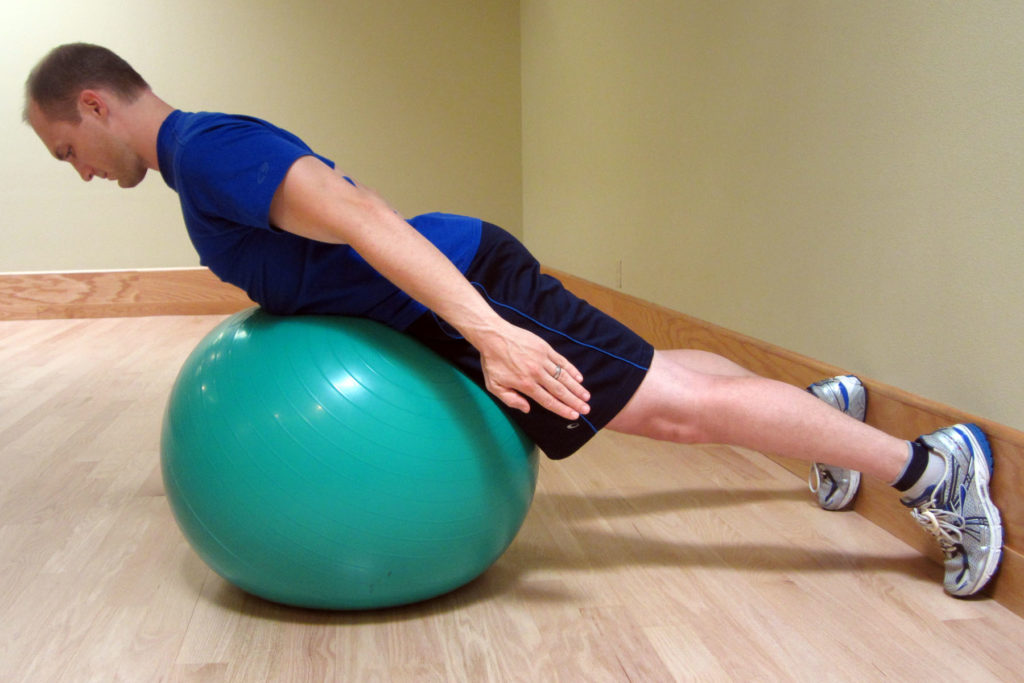The purpose of I’s, T’s, and Y’s exercises on an exercise ball is to address lower and mid trapezius and scapula muscle weakness and to generally activate the posterior chain (including the lumbar spine extensors). Poor posture due to poor thoracic mobility and poor scapular muscle strength are often major contributors to neck, shoulder, and upper back pain. Poor lumbar extensor strength is linked to low back pain.

I’s, T’s, and Y’s exercises on an exercise ball can be helpful in treating the following:
- Poor posture
- Shoulder pain
- Cervical pain
- Headaches
- Thoracic pain
- Upper and lower back pain
Begin by performing the I’s, T’s, and Y’s exercises on a Thera-Band Exercise Ball. Please refer to I’s, T’s, and Y’s Exercises for step-by-step instructions. Start slowly without resistance. Keep your chin tucked and head aligned with the body.
Version One: Move your arms slowly up and down in each position of I, T, and Y.
Version Two: Hold each position for the specified time.
To increase the difficulty for either version, add a 1-3 pound weight in each hand. These exercises shouldn’t cause any pain in your neck, shoulder or upper/lower back.
When this exercise is performed correctly, it engages and strengthens many critical muscles that help control many of our most common postures and movement patterns. A slouched posture with a forward head and rounded shoulders can be associated with many common pain syndromes including: neck pain and headaches; upper back pain; and shoulder pain.
It’s important to try to keep the proper postural alignment with your shoulders under your ears, and the shoulder blades set in a back and down position. This is particularly important when performing any activity while using the shoulder. This series of exercises can help to strengthen the important muscles that can help you maintain proper postural alignment.
Be sure to check out my video post, How to Use an Exercise Ball to Improve Posture and Treat Shoulder, Neck, and Back Pain, in which I demonstrate how to perform I’s, T’s, and Y’s exercises on an exercise ball in order to address lower and mid trapezius and scapula muscle weakness.
When performing these exercises, it is important to understand that they should never be painful. You may feel a mild to moderate discomfort because the exercises are difficult, but if you are experiencing pain (particularly, the pain you are trying to treat) please discontinue the exercise and speak to your physical therapist.
Have you tried the I’s, T’s, and Y’s exercises on an exercise ball before? If so, what has your experience been like? Please leave your comments below.
If you have a question that you would like featured in an upcoming blog post, please comment below or submit your question to contact@thePhysicalTherapyAdvisor.com. Be sure to join our growing community on Facebook by liking The Physical Therapy Advisor!

